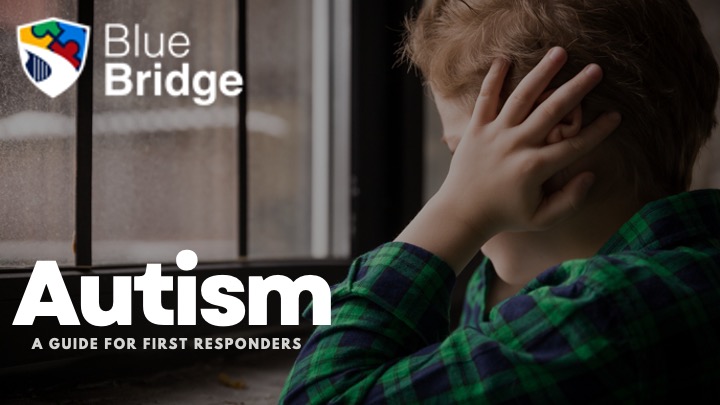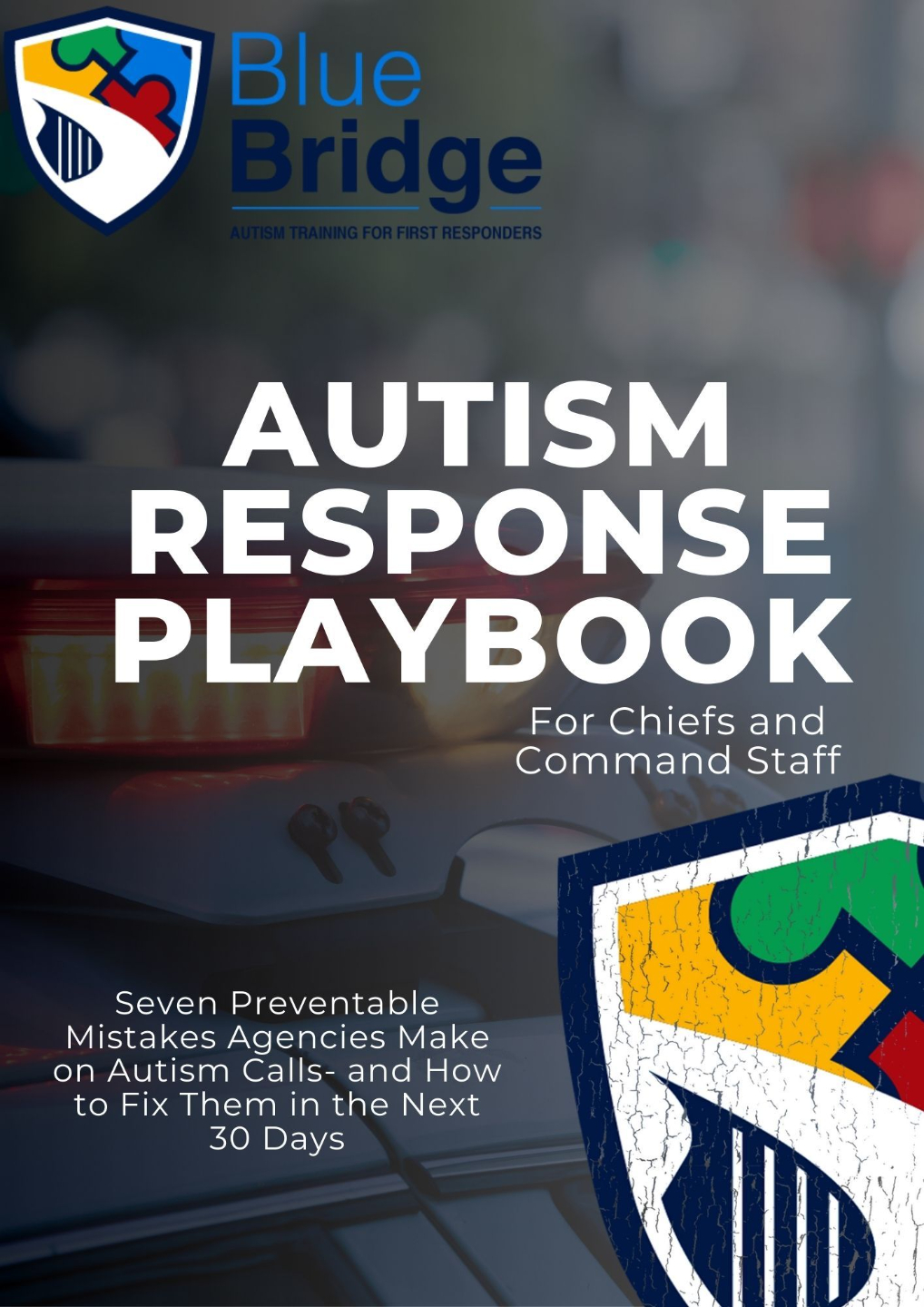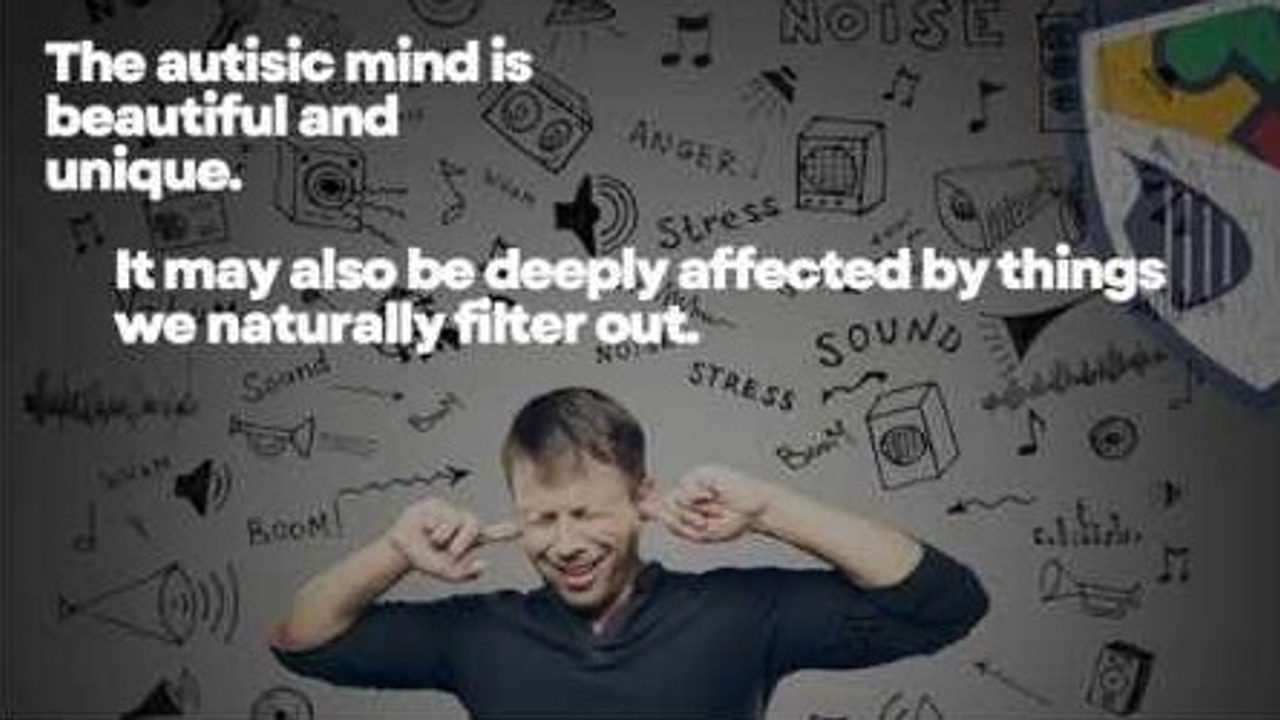
8 Autism-Related Terms Every Police Officer Should Know
Apr 26, 2022(and why you have a vested interest in learning them)
You WILL meet people with autism during your next shift. Are you prepared? Is your police academy training adequate to navigate these challenging situations? Are you sure?
According to the CDC, there are 5.4 million ADULTS (2.2% of the population) in the United States diagnosed with Autism Spectrum Disorder.
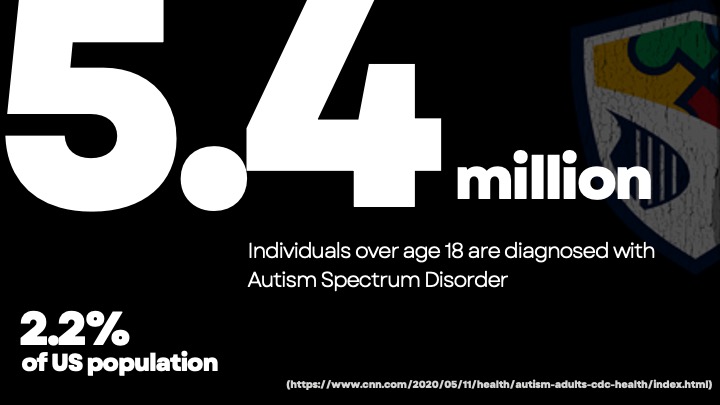
Add the millions of autistic adults who have not received a clinical diagnosis and the 1 in 44 children on the autism spectrum. It becomes clear: You WILL interact with autistic people today.
It may not be obvious and may not even register in your consciousness, but the odds are it will happen.
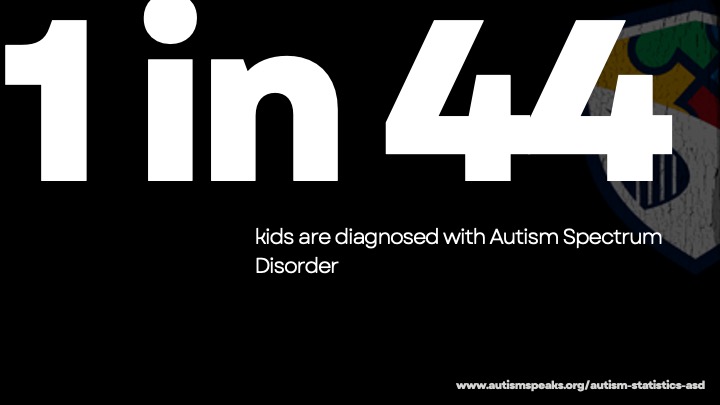
Every day, police officers make split-second decisions that alter lives (including their own). We make those decisions based on training, experience, and instinct, usually with incomplete or inadequate information. Those decisions are then dissected by "experts" and judgment is passed down. 99% of the time, we get it right. Sometimes, we get it wrong. Unfortunately, today we are given little benefit of the doubt and few second chances. I am here to tell you when it comes to autism:
-
Usually, our training is inadequate.
-
Often, our experience fools us.
-
Frequently, our instincts misguide us.
By definition, autism is a "spectrum." No two autistic people present in the same way. There is no universal autistic indicator or easily identifiable physical identifier for autism. And here is the scary part for a police officer: Often, common autistic behaviors MIMIC what our training, experience, and instincts identify as:
- Intoxication
- Impairment by narcotics
- Mental illness
- Disrespectful
- Belligerence
- Deception
- Evasiveness
- Criminality
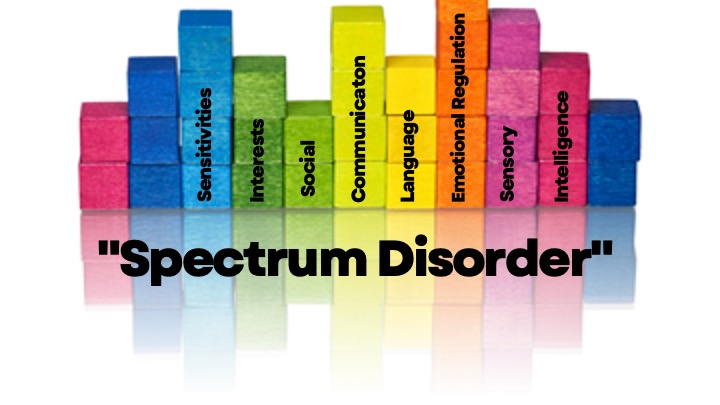
Now, I will never ask a brother police officer to sacrifice their safety, ignore their training, or lower their guard during a potentially dangerous encounter. You go home at the end of your shift. That is always the rule. However, I would like to plant a tiny seed in the back of your head during these encounters that there might be something else going on, autism might be involved, and sometimes our training, experience, and instincts lead us astray.
These are no substitute for real, meaningful autism awareness training, and I urge you and your department to invest in my complete course: Autism: A Guide for First Responders.
However, I offer this article as a resource to introduce you to autism and get your gears turning a bit. Here are eight autism-related terms you should understand and how they apply to your duties as a police officer.
8 Autism-Related Terms Every Police Officer Should Know:
1. "Sensory"
A significant percentage of autistic individuals experience challenges regulating their sensory systems. Their sense of Vision, Hearing, Touch, Taste, and Smell may be challenged or dysregulated. These senses may be over-sensitive or under-sensitive (requiring above-average sensory input) for someone living with autism. These sensory sensitivities are also significantly affected by stress, trauma, anxiety, and fear. Understanding these sensory challenges and respecting the impact they may have on an autistic individual's behavior are CRITICAL for police officers tasked with assisting, serving, and protecting them. They are also the key to gaining trust, cooperation, and compliance during our most stressful and traumatic calls for service involving someone on the autism spectrum. Avoiding direct eye contact is common in autistic individuals and is understandable from this sensory perspective. Many autistic individuals describe being overwhelmed by the sensory input emitted from another person's facial expressions, sometimes experiencing physical pain from direct eye contact.
2. and 3. "Vestibular" and "Proprioceptive" Systems
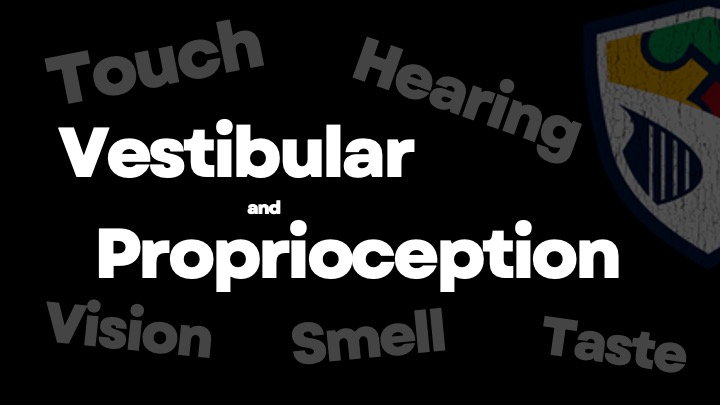
We all learned the five basic senses in the third grade. Did you know there were two other senses?
- Vestibular: Our sense of balance and our body's awareness of movement. The sensation of body rotation and gravitation. It's our body's gyroscope and is the sense affected by an inner ear infection, head trauma, or intoxication.
-
Proprioception: Our body's ability to perceive its position in space. This sense gives us the ability to tie our shoelaces, write, fasten buttons, and catch a ball. Like the basic five senses, these senses are CRITICAL. And like the primary five, they can be dysregulated and challenged in someone on the autism spectrum.
Poor balance, fumbling with small objects, or inability to stand still are all examples of vestibular or proprioceptive dysregulation. What else are they according to our police training and experience? Yes, "indicators of intoxication."

Sensory sensitivity in these areas explains other common autistic behaviors such as rocking, toe-walking, pacing, or hand-flapping. My 18-year-old son is autistic. He is a sensory-seeking machine. He is in constant movement and seeks vestibular and proprioceptive input like a thirst. His favorite item is his hoverboard. While I snap my ankles every time I try to mount the thing, he hovers around my home like an ace on this little gyroscopic contraption. I have come to realize that this is more than just a fun hobby for him. These gizmos provide his body with the sensory input it craves.
4. "Stimming"
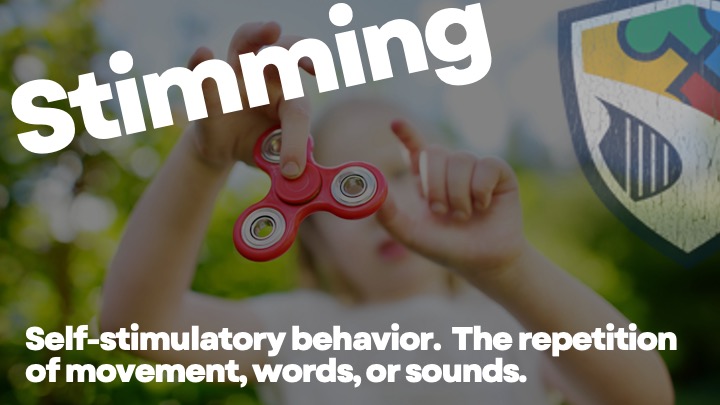
These common autistic behaviors (hand-flapping, toe-walking, rocking, pacing, vocalizing) are called "stimming." Stimming is self-stimulatory behavior that provides our body with the sensory input it needs to self-regulate, feel grounded, vent excess energy, or remain calm. And, guess what? We all do it. Right now, you are probably chewing on a pen, twirling your hair, bouncing your leg, or picking your fingernails. It is a common physiological activity that serves a specific need. This need is more pronounced for people on the autism spectrum, and the stimming behaviors are more exaggerated.

5. "Meltdown" (vs. Temper Tantrum)
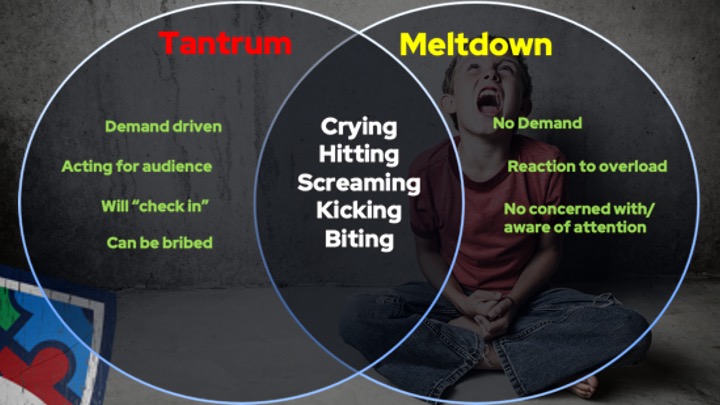
They present in the same way: a child (or adult) crying, screaming, lashing out, and behaving in a way polite society deems inappropriate. We are all guilty of observing a child having a temper tantrum in public and silently judging the parent or caretaker, whispering to ourselves, "that kid is spoiled and needs discipline." Be careful, however. While they look identical, there are significant differences between a temper tantrum and an autistic meltdown:
- Tantrums are demand-driven: the individual wants something or has been denied something he wants.
- The individual having the tantrum is acting for an audience.
- While it is poor parenting, tantrums can be thwarted through bribery, discipline, or reason.
Meltdowns are a SENSORY-driven event. The individual's sensory system is overloaded so that the body can no longer regulate itself. There is no demand driving the behavior; the person is entirely unconcerned or unaware of an audience or attention. Bribery, reason, or threat of discipline have no impact on the behavior.
When these meltdown events occur, they are scary and exhausting for both the individual and the parent or caretaker. When they occur in public, the anxiety and embarrassment increase significantly. If you are dispatched to one of these events, and you suspect the individual is on the autism spectrum, your best course of action is:
- Make the scene safe
- Give privacy if possible
- Ask the caretaker for advice in assisting them
- Offer calmness, not additional stress
- Reduce sensory stimuli (lights, noise, odors)
- AVOID JUDGMENT
Police training usually dictates that the officer take control of the scene, go hands-on, and establish an authoritative presence. It has been challenging for me to explain to brother officers that their best option during an encounter with an autistic individual having a behavioral crisis might be to make the scene safe and give them space. Sometimes the best strategy may very well be to do nothing. People with autism and their caretakers develop their own techniques and skills to de-escalate themselves, including "stimming" and "scripting" which we will talk about next. These techniques take time, however. Remember, no matter how extensive your training and experience may be, you are NOT the expert at that scene. The individual or their caretaker has the upper hand and it would be wise to defer to their experience and training and take on a supportive role.
6. "Non-verbal"
According to some estimates, up to 40% of individuals diagnosed with autism are NON-VERBAL.
"Non-verbal" means precisely that: they cannot speak. If you forget everything else you have read in this article, however, I beg you to remember this:
- "Non-verbal" does not mean "unable to communicate."
- "Non-verbal" does not mean "unable to understand."
- "Non-verbal" does not mean "unintelligent."
- "Non-verbal" does not mean "unable to feel emotions, embarrassment, spite, pride, or shame."
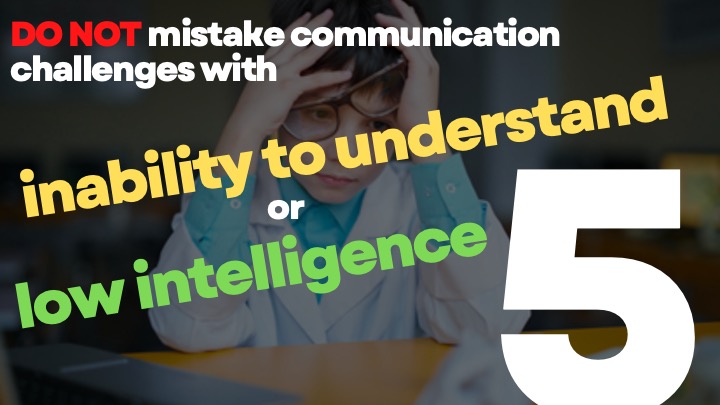
While there are autistic people who are both non-verbal and have challenges with comprehension, they are not necessarily combined. Making this assumption disrespects the autism community, the individual, and their capabilities. It may also prove costly to your police career.
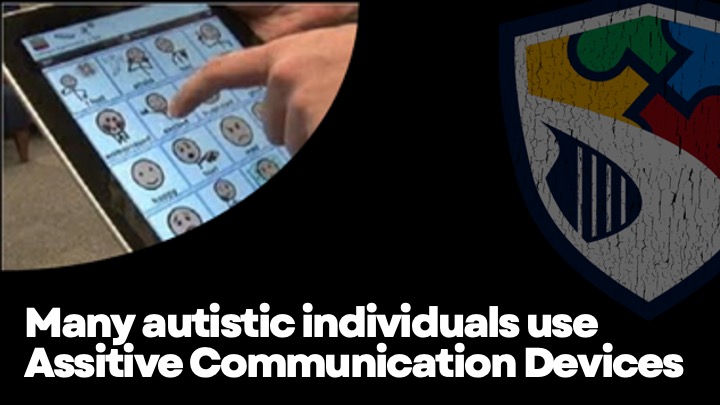
Verbal communication is only one of the dozens of ways people communicate. Sign language, written communication, Assistive Communication Devices, pictures, even pointing and gesturing: All recognizable (and effective) ways people communicate. If you are trying to gather information or speak with a non-verbal autistic person, be patient, agile, and observant. Amazing and intricate conversations can occur without ever uttering a word.
7. "Echolalia"
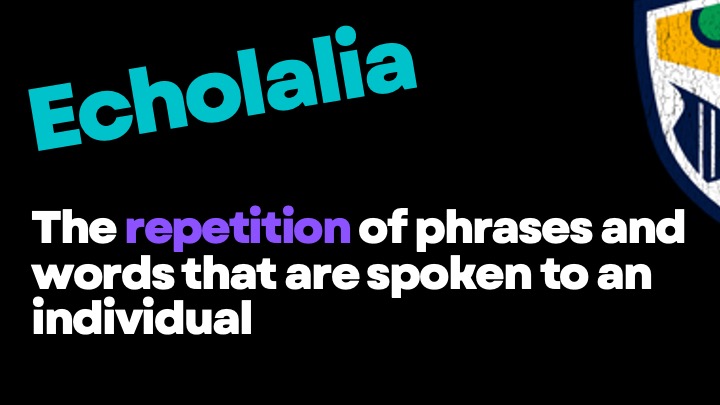
A common term in the autism community is "echolalia": the repetition of phrases and words spoken to the autistic individual. If you ask a person with autism, "what is your name?" You may receive the response, "What is your name?" They are not being rude, difficult, or snotty. You are witnessing echolalia.
For a police officer who is trying to gather information during a stressful or dangerous event, this can be frustrating. However, if you know what you are experiencing, you can better navigate the situation. Be patient and agile. If you suspect the person may have autism, back up and ask the same question differently. If verbal responses are not bringing results, ask them to write the answer. Echolalia can also prove dangerous during a police encounter. It doesn't take an overly vivid imagination to consider a scenario where a police officer orders a suspect to "show me your hands!" and is met with the response, "show me YOUR hands." "Stop, or I'll shoot!" may be met with, "Stop or I'LL shoot!" Remember officer safety, rely on your tactics and training, but consider the possibility that your "suspicious person" may have autism.
8. "Scripting"

Like echolalia, "scripting" is a common activity for many people with autism. And, like echolalia, it can be misinterpreted by well-meaning police officers relying on their trusted police academy training, experience, and instincts. "Scripting" is the recitation of lines from movies, books, TV shows, or commercials. It can also take the form of repeating past conversations with loved ones, teachers, police officers, etc. For someone with autism, scripting may be calming, soothing, or simply fun. My son scripts his favorite scenes from Disney Pixar movies when he is anxious, excited, angry, or bored. If you were listening to this activity and unaware of the context, you would think he is having a full-blown conversation, complete with appropriate voice inflection and comedic timing.
However, the trap, especially for a police officer, is misinterpreting scripting and echolalia as expressive language. Often, the person is only rotely reciting the sounds and words he has memorized with little understanding of their meaning, context, or how people around him unfamiliar with autism are interpreting them.

We haven't even scratched the surface of this fascinating and beautiful world of autism. This article has not "trained" you. That was not my intention. However, I hope this information has at least opened your eyes to these topics and provided some small insight into the world of autism you had not previously considered and why they are critical for you and your department.
I have written this article as much for the benefit of my brother police officers as for those I love in the autism community. Our job is dangerous enough. We seldom receive all of the necessary information to make these challenging decisions. Well-intentioned misunderstanding, misinterpretation, and miscommunication are some of the hidden dangers we can take steps to avoid. I implore you to invest in your police department, community, and yourself by pursuing more information and a complete training program in the area of autism and special needs (if not with me, then with another expert your department trusts). Please be safe and get home to your family.
Autism: A Guide for First Responders

Don't miss an article!
Coaching, inspiration, tips, and guidance delivered to your inbox!
We hate SPAM. We will never sell your information, for any reason.

